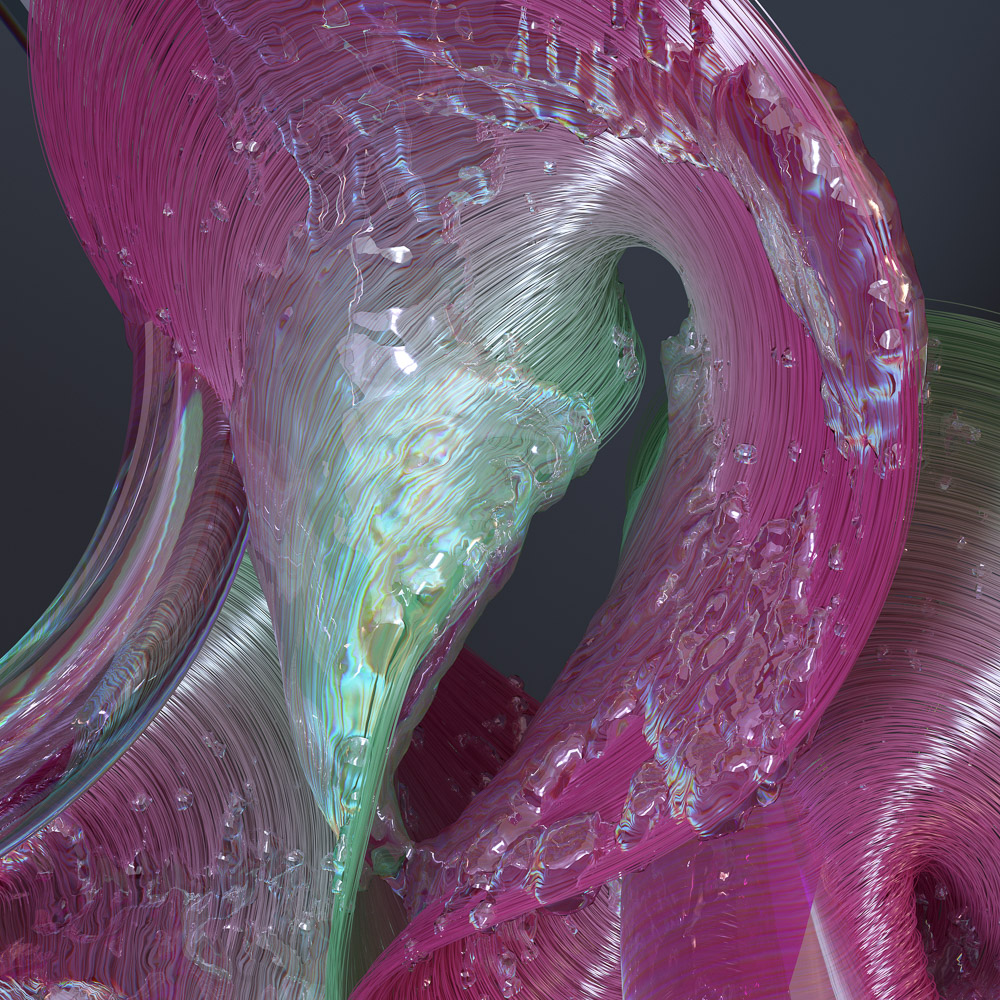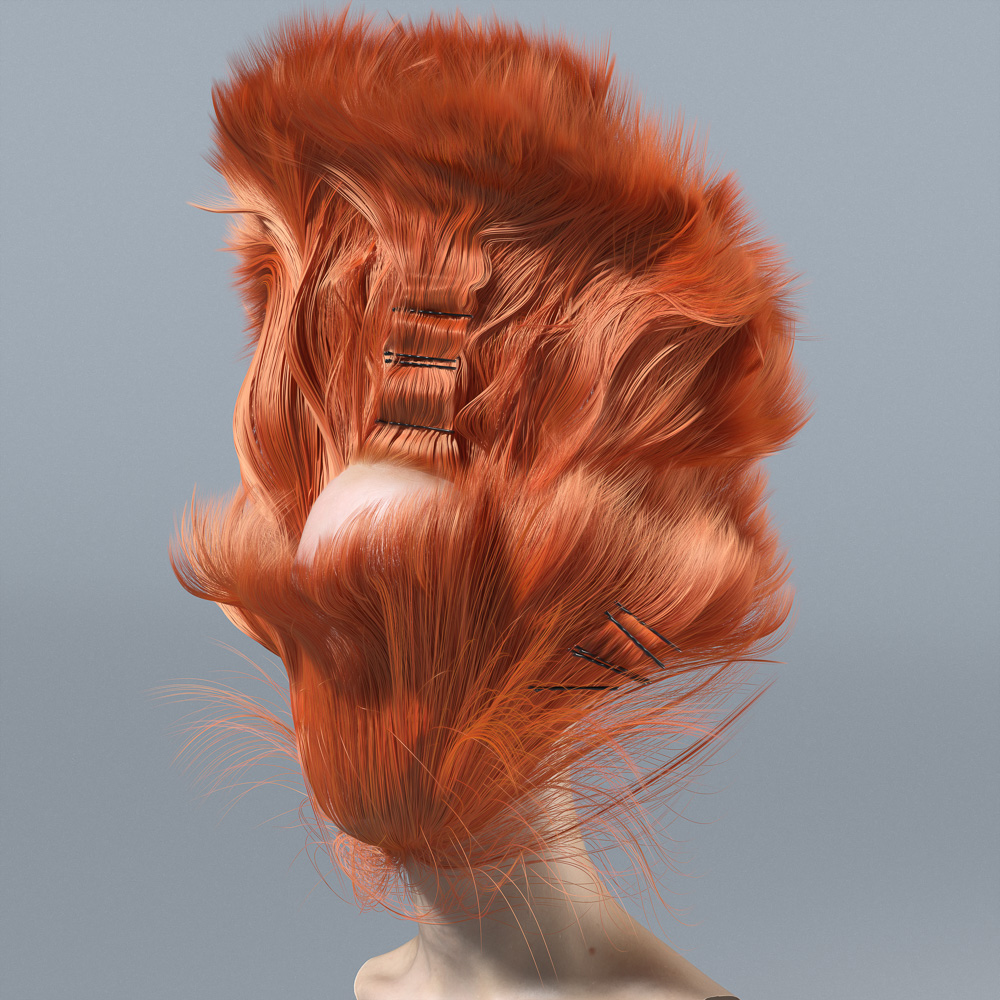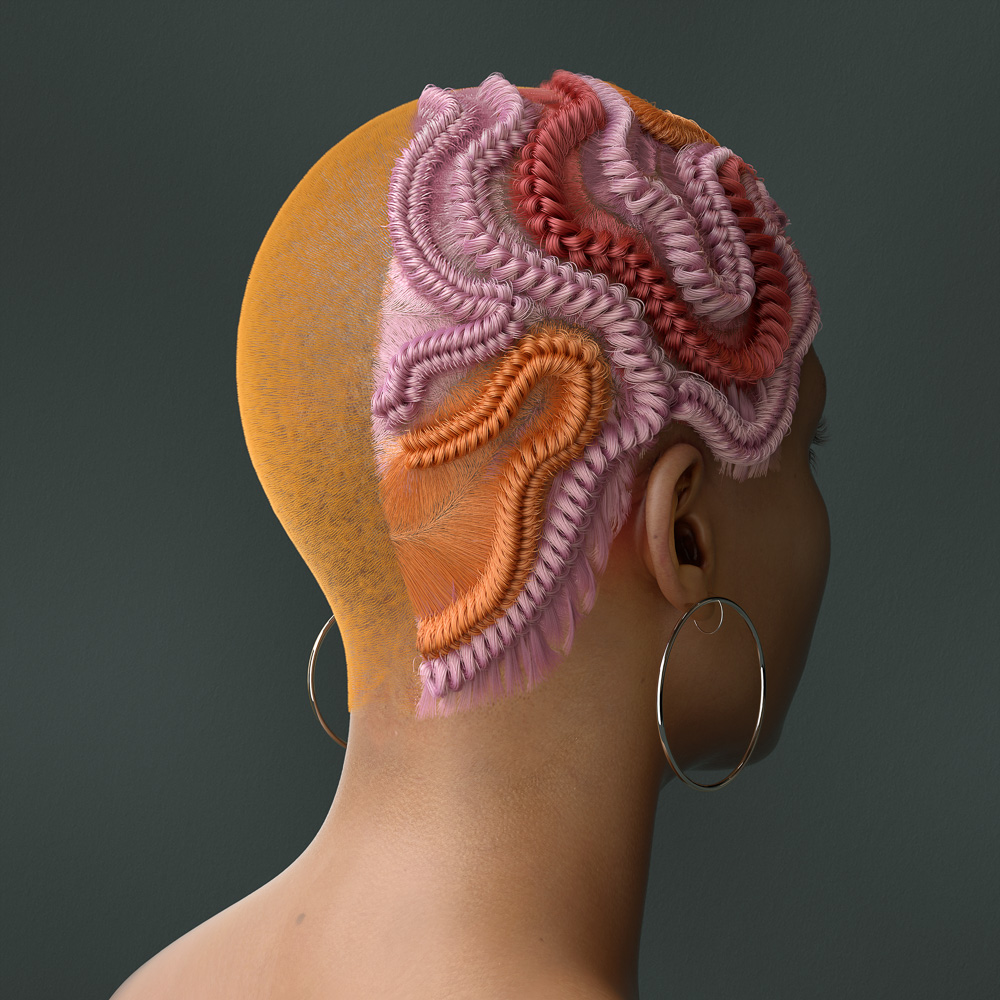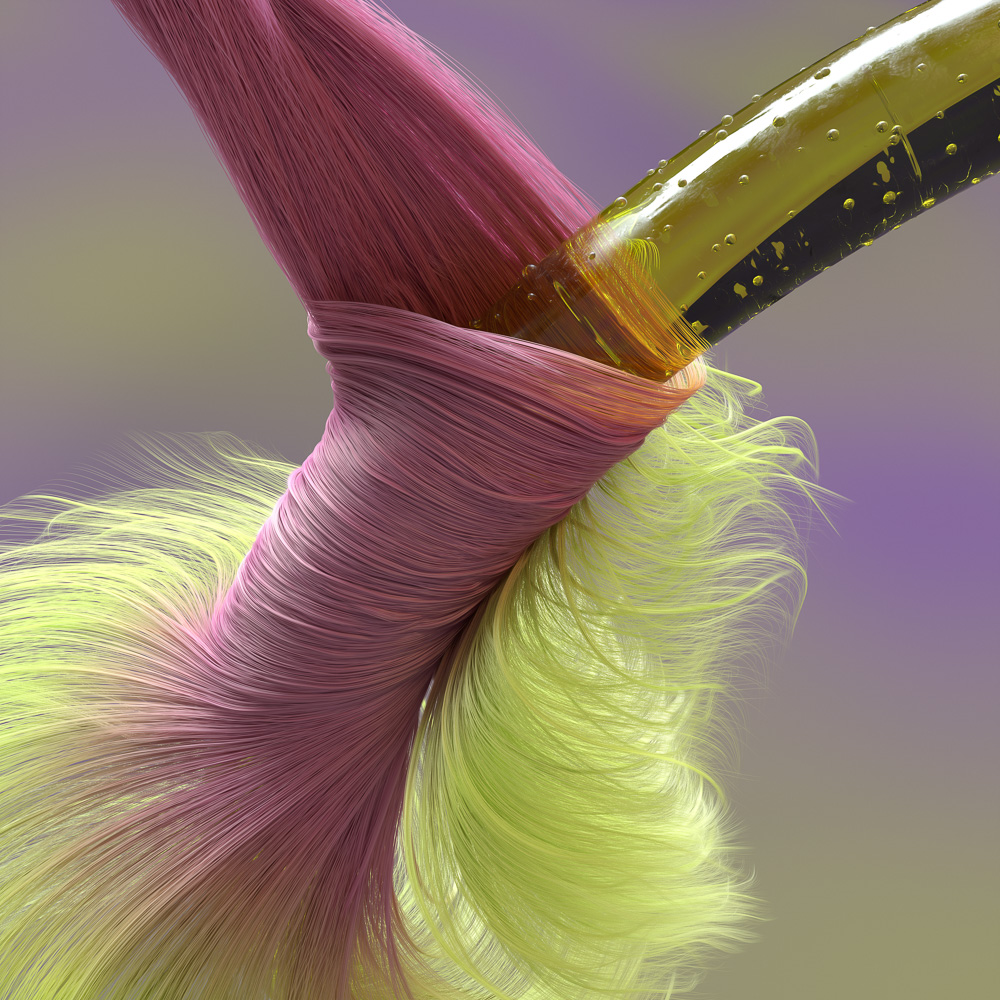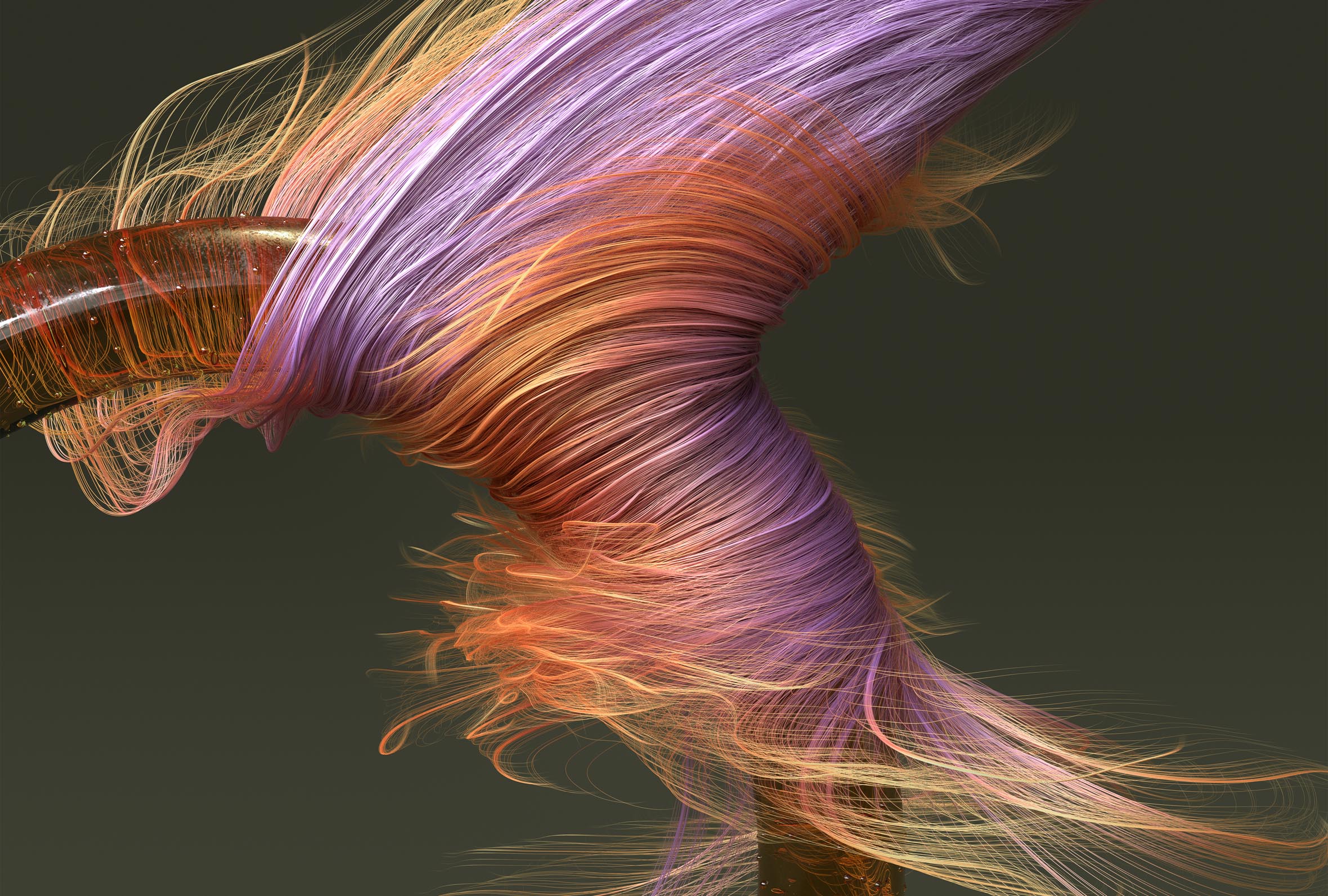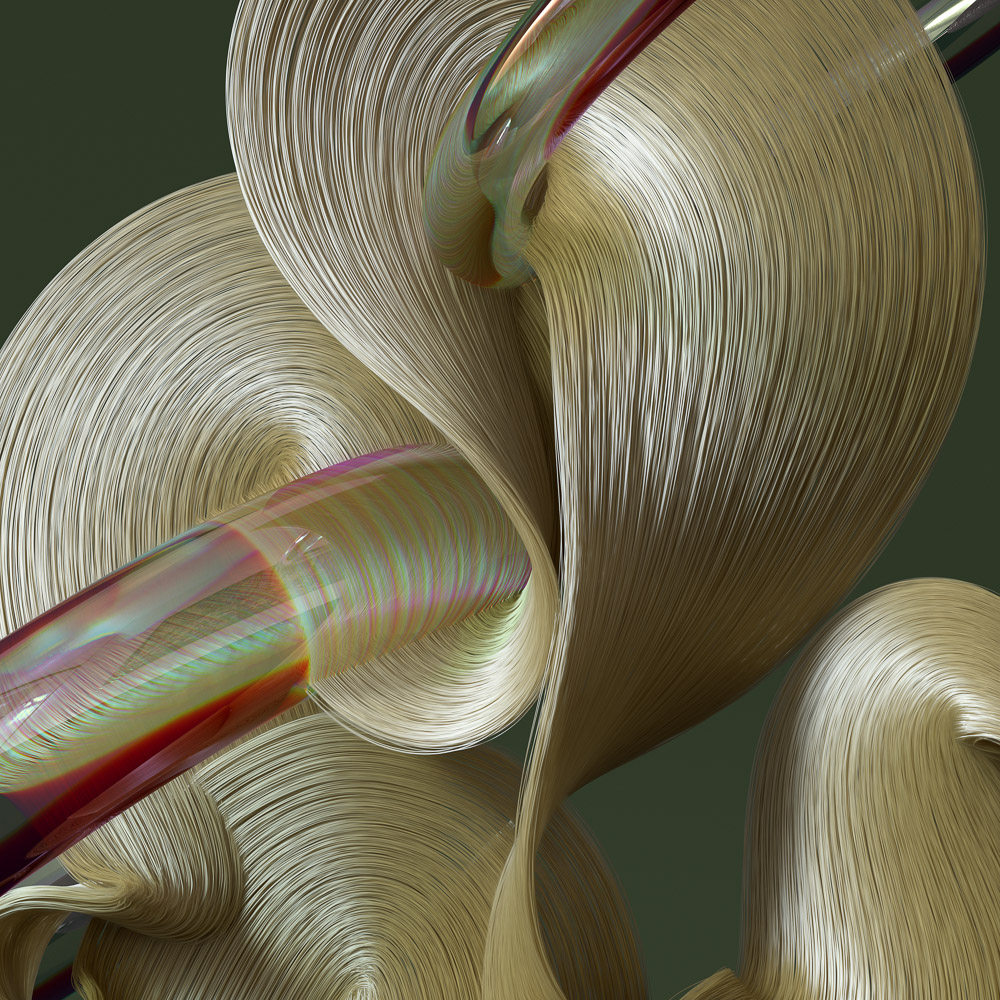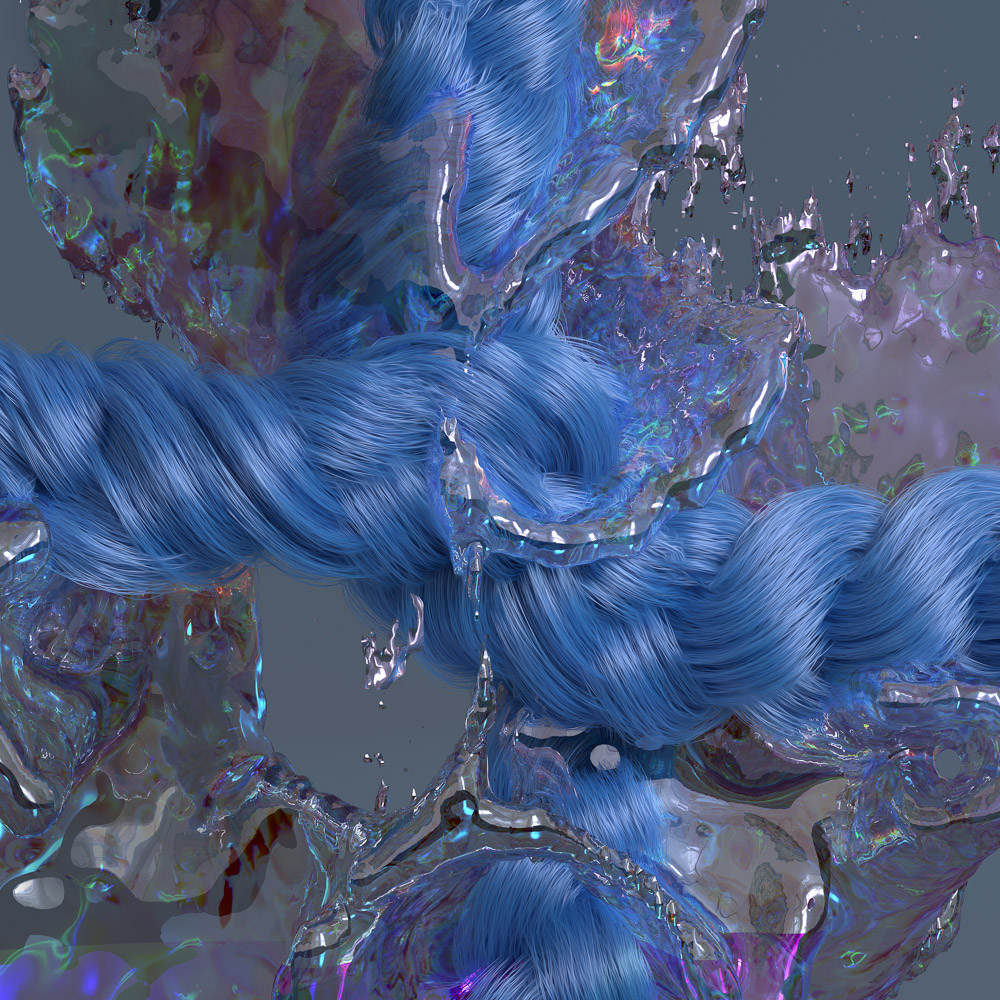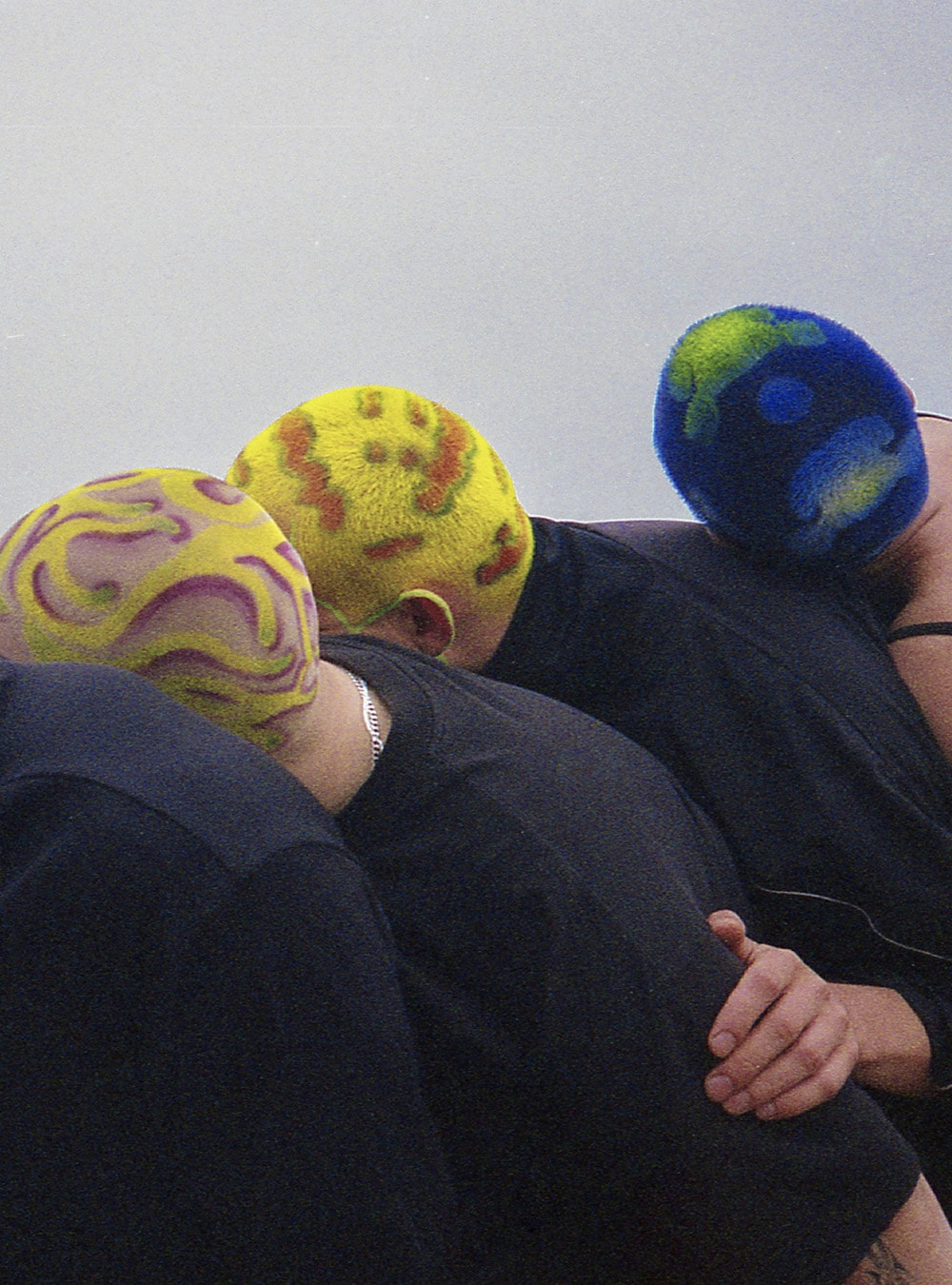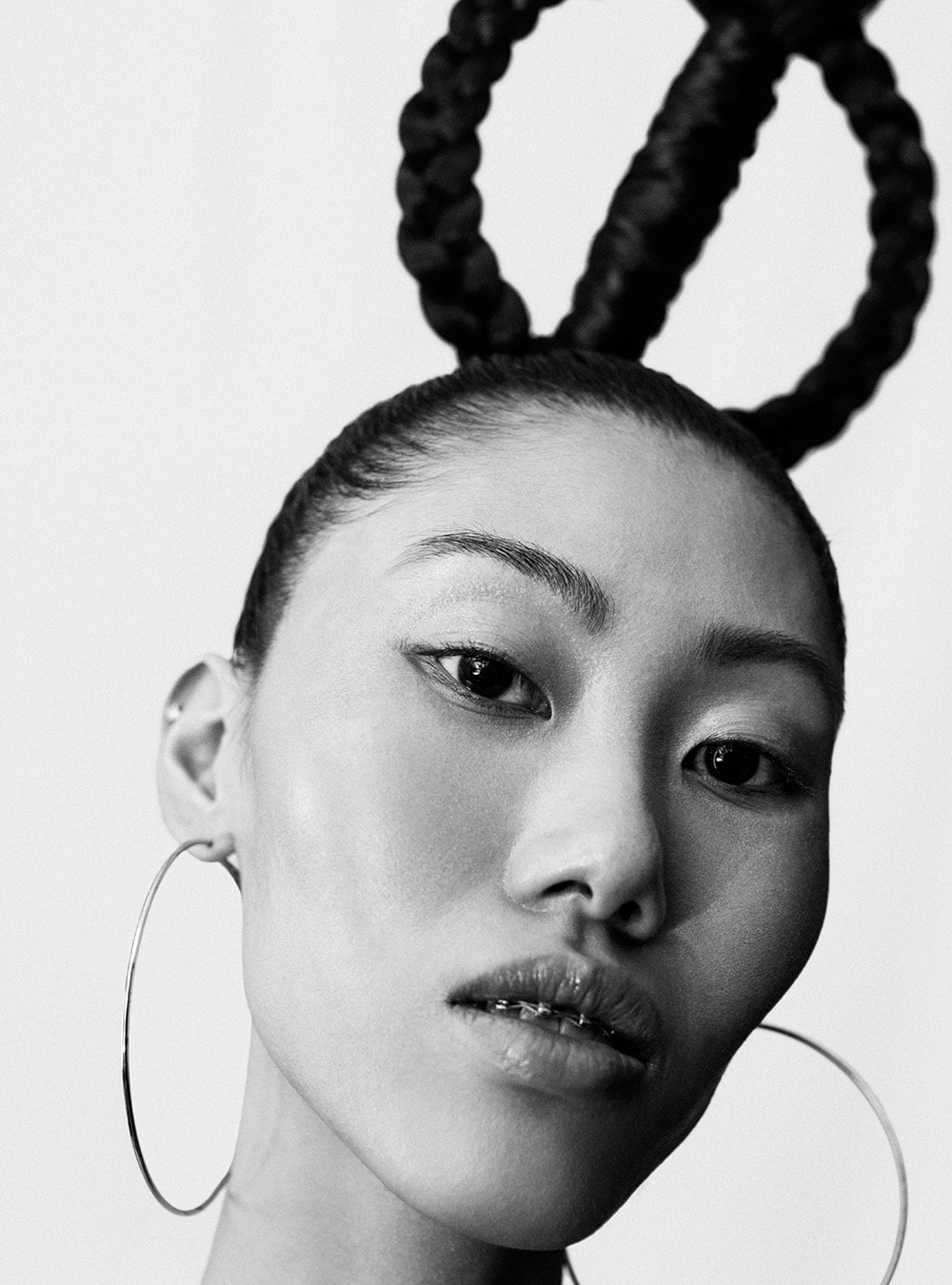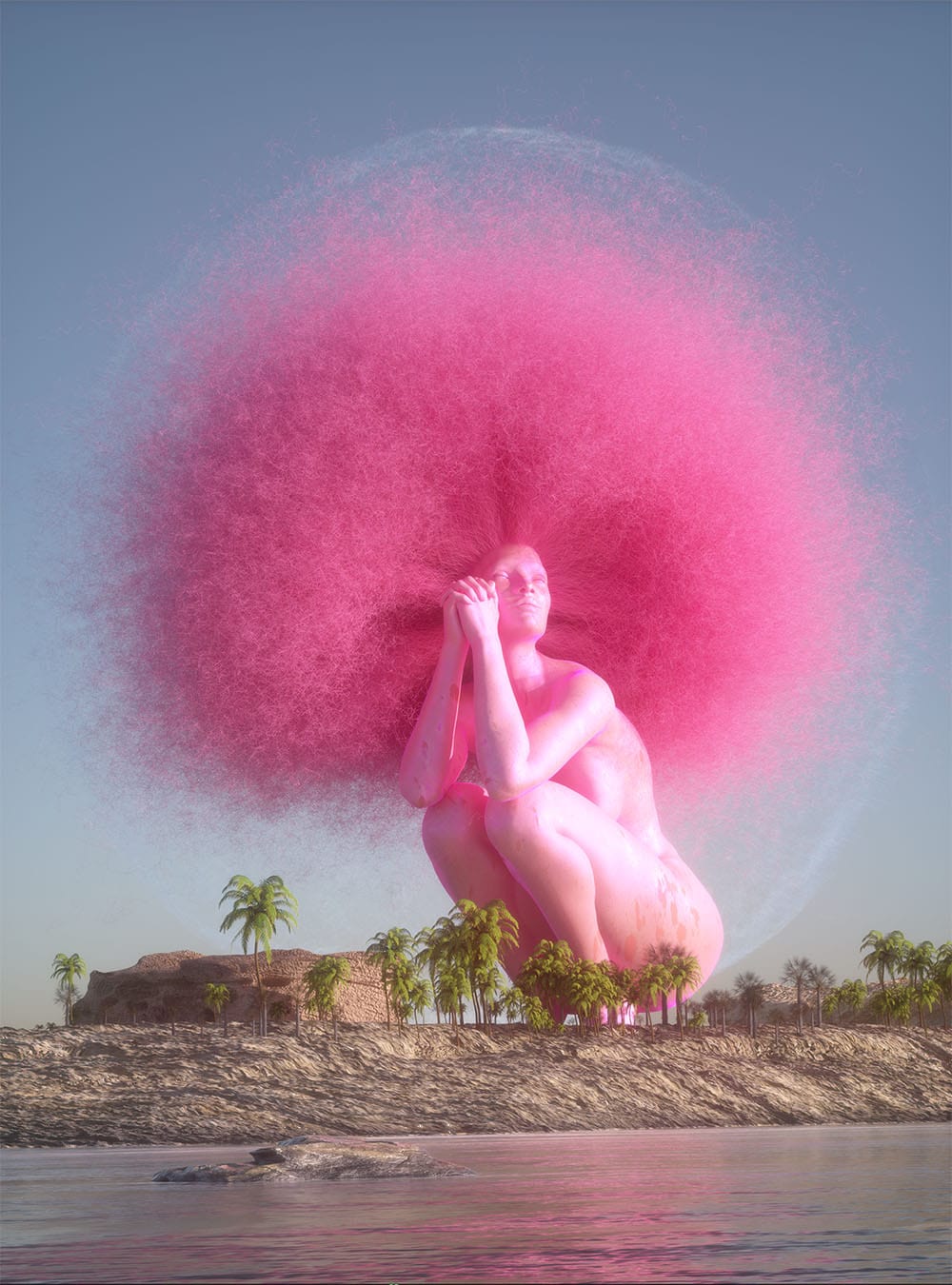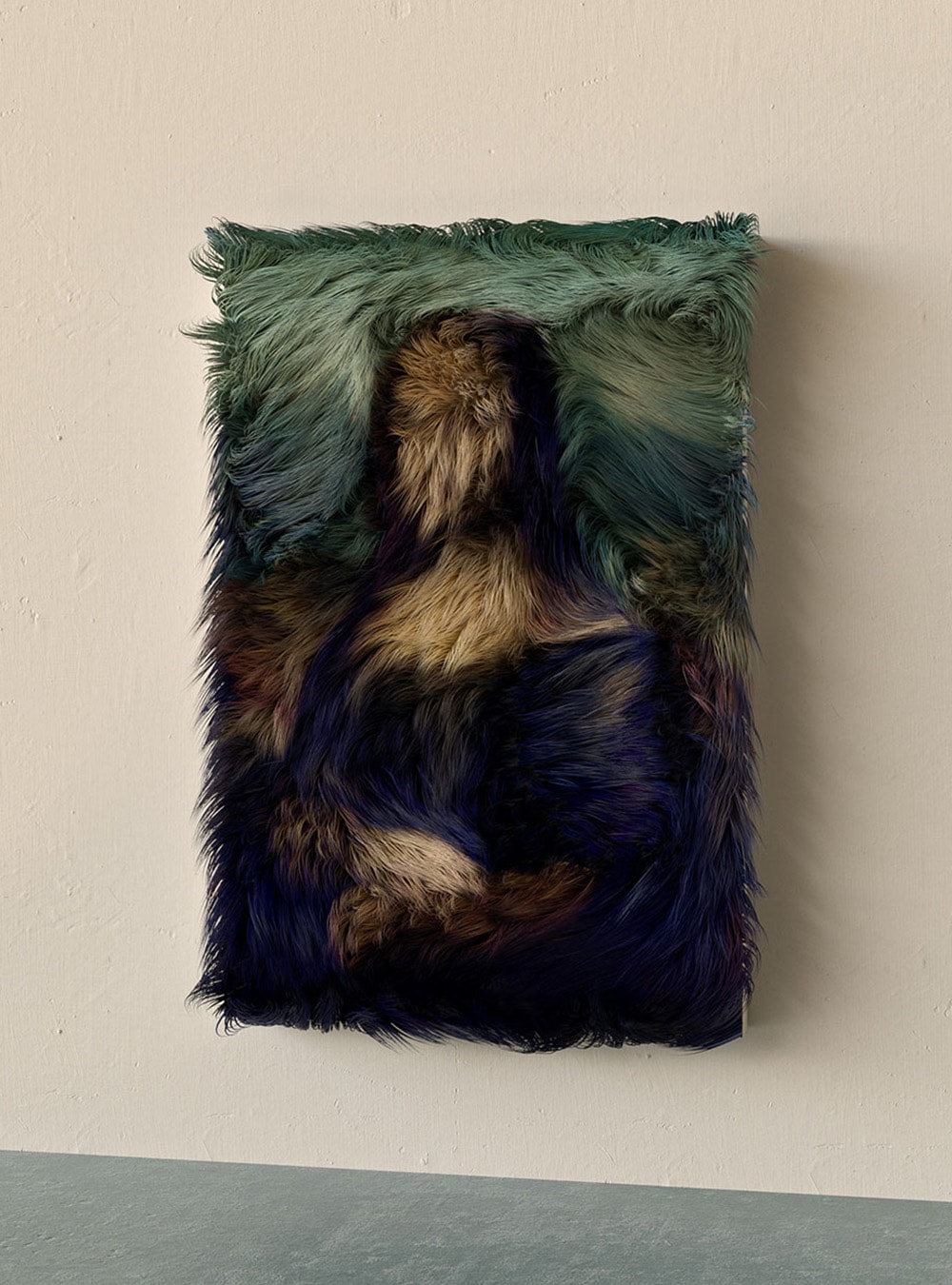ART + CULTURE: Alexa Sirbu goes on a CGI quest to explore the hypnotising qualities of hair
Digital Art: Alexa Sirbu
Interview: Katharina Lina
Alexa Sirbu is the digital artist behind the computer-generated h.air series, a vivid parade of different scenarios in which hair is mesmerisingly manipulated with the help of wind, water, combs, and other objects. Originally from Romania, Alexa Sirbu studied Multimedia Computing at Coventry University and now lives and works in London. Her prior experience from working at other London design studios helped Sirbu build a portfolio that shows off her abilities to visually manipulate elements and computer generate supernatural scenes and landscapes; but a heightened sense of unbound creativity starts to shine through her work once Sirbu started running XK studio, a practice she co-founded with Lukas Vojir. Her series h.air features colourful closeups of the sculptural and structural elements of hair, but beyond that, h.air is a visually striking exploration of the beauty of hair and its enthralling fluid motions.
When and how did you first get into 3D / CGI work? I was experimenting with digital art as soon as I got my hands on a computer, mostly playing with Photoshop, collages and 2D animation. I was intrigued by 3D but put off by its perceived complexity, however I later discovered a series of online tutorials which made it more approachable, dived straight into it and fell in love with the medium.
What drew you to creating work around hair? Creating CG hair requires a right mix of artistry and technical ability. Conceptually it is a good vessel for artistic expression and technically it offers various challenges with regards to creation, simulation and rendering in a realistic tactile way. These are elements I always look for when starting a new personal project.
Furthermore, a lot of my work involves taking the subject away from its typical setting and looking at it through a design lens. I was very attracted to the idea of using hair as a graphic element in a more unconventional way.
In most of these pieces, movement seems to be a theme. How did the way that hair moves pique your interest? Hair has the capacity to move in such an elegant and mesmerising way – there’s something very satisfying about it. I would spend a lot of time watching videos of extremely long Rapunzel hair in slow motion and be compelled to try it myself in 3D.
Did you have specific inspirations for the pink and orange braided hairstyle, or did you freestyle it? I have always been obsessed with forms that I can manipulate and transform with my own hands and originally wanted to develop a system that would allow me to draw strips of hair onto a model’s face and have them perfectly follow its contours. At the same time, I was also experimenting with procedural braids and marrying the two resulted in a unique look. This however led to the face feeling too cluttered and instead, the back of the head made for a nice, spacious canvas to draw on.
What is the process for creating CGI hair? And what are some of the difficulties in making CGI hair? Traditionally you use a 3D model to generate guides, which are then shaped and styled using grooming tools like brush, part, clamp etc. Some of the hair is generated that way but for a lot of my abstract pieces I did not follow the traditional workflow and had to come up with my own ways. Most of the times I used a combination of hand drawn curves, collider objects and simulation forces that allowed me to not only control the origin of the hair but also the direction of its movement and general behaviour.
The difficulty comes from taking these CG lines and turning them into something that looks tactile. This involves creating a harmony between the lighting, shading and rendering engine and I’ve experimented with several methods until settling on one that produced the most compelling results.
Other than the technical aspect, what was your process like in terms of thinking up these surreal hair scenarios? At what point do imagination and CGI programme meet and collaborate? It was a combination of being inspired by either a real hair look/behaviour or an idea for a technique that might look interesting in cg. However, the creative process is very organic and sometimes chaotic and what starts as one thing ends up being something completely different. Using CG, and especially hair simulation tools leads to surprising and unexpected results so you can argue that a simulation solver is often your collaborator. These spontaneous tests can spark further ideas which I then refine into more considered pieces.
Could you describe your own relationship with hair? I always enjoyed playing and trying different things with my own hair and sometimes with other people’s. Despite relying more on intuition rather than actual technique I somehow managed not to totally mess it up. Anytime I would feel stuck or uninspired I would turn to my own hair and try something new with it, either by colouring it, getting a fringe or just cutting it altogether. It tends to reflect a point of change in my life and helped me redefine my character and evolve into a better version of myself.
Besides being linked by hair are there other themes you’re hoping to explore? What would you like the viewer to take away from this series?Two major themes that pervade my work are tactility and hyperrealism. Despite it being 100% digital, I wish for my work to spark an immediate sensation and for the viewer to question what is real and what isn’t. It’s about creating something that has a sense of familiarity but is manipulated and presented in a way that would be impossible to do in the real world.
Alexa Sirbu is the co-founder of XK Studio.
